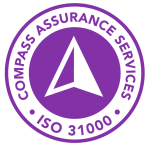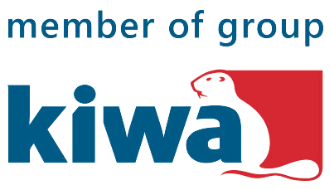Facilitating effective risk management.

ISO 31000 Risk Assurance
Risk Management Systems
All organisations are affected by risks that can have consequences on their;
- financial performance,
- their environmental,
- societal outcomes as well as,
- reputation.
Some organisations are exposed to more risks than others due to the nature of their business or their business environment. Some organisations are willing to accept more risk than others because with more risk we expect more return. However, one thing that is common in all organisations, is that to protect their value, all organisations must have an effective process to manage risk. This is where ISO 31000 Risk Assurance comes in.
Request a Quick Quote
Request an obligation free quote today, tailored specifically to your business’ certification needs and industry.
Get Your ISO Checklist
Contact Us

What is ISO 31000 Risk Management?
Some organisations are exposed to more risks than others due to the nature of their business or their business environment. Some organisations are willing to accept more risk than others because with more risk we expect more return.

Why do I need ISO 31000 Risk Assurance?
Risk management can also help an organisation ensure that it complies with relevant legal and regulatory requirements and it can also improve stakeholder confidence and trust in an organisations performance.
Have you looked at our self assessment checklist yet?
We worked hard so you don’t have to: our checklists break down the standard in plain English so you can understand the requirements and what your business needs to do to get certified.

ISO 31000 Risk Key Principles
The risk management principles are a key part of ISO 31000 and they also support why a business would want to invest in an effective risk management process.
Some of the key principles include:
- Risk management creates and protects value: This is a key principle as it strives to ensure that any risk management activity will add value to the organisation. More simply the benefit must be greater than the cost and if the cost exceeds the benefit then, don’t do it.
- Risk management is an integral part of all organisational processes: This recognises that risk management must be embedded within and organisation and part of it’s key processes. Through this it also aims to eliminate duplication of activities. So risk management should not be another set of activities that is added increasing the administrative burden on the organisation, it should become part of established processes.
- Risk Management is tailored: A risk management process is not one size fits all. For it to be effective and to add value it must be tailored to organisations needs. It must align with the organisations internal and external environment as well as its risk profile.
ISO 31000 Risk Principles & Guidelines
All organisations have some form of risk management and some are clearly more effective than others. ISO 31000 is the first International Standard for risk management and it aims to provide generic guidelines that can be applied to any industry or sector.
ISO 31000 establishes a set of risk management principles that organisations seeking an effective risk management process should comply with. It also establishes a risk management framework, which ensures that there are sufficient mandate and commitment from senior management and that organisations understand their own organisational context. This makes sure the risk management process is tailored to the organisations’ needs.
The third part of the ISO 31000 Risk Management Principles and Guidelines is the risk management process. This process looks at how an organisation can assess their risks and select the appropriate treatments.
ISO 31000 Risk Management Framework
A key aspect of the risk management framework as described in ISO 31000 is that it is designed to assist an organisation to integrate risk management into its overall management system.
The benefit of this is that it saves on duplication of processes, and hence additional administration cost for your business. It also re-enforces the point highlighted in the principles that risk management must be tailored to your organisation.
The framework identifies that for risk management to be effective it is critical that there is a strong mandate and commitment from the management of the organisation. This commitment must also be sustained. Ensuring that the culture of the organisation and its risk management policy are aligned, aligning risk management with the organisations strategy, ensuring that risk management is resourced and that benefits are communicated to all stakeholders are some of the key areas here.
The steps to design a framework for managing risk are also identified. Following and applying these ensures that you understand your organisations internal and external operating environment, highlighting again the principle that to be effective this must be tailored to your organisation. This design will also consider communication, as it is critical to underpinning any risk management process, engaging internal stakeholders allocating accountability and ensuring ownership as well as ensuring appropriate interaction with external stakeholders. ISO 31000 also highlights the steps to consider when implementing risk management and monitoring and reviewing the framework.
Through monitoring and reviewing of the framework, it can be ensured that the risk management continues to be effective for the organisation and continues to support the achievement of its objectives. The output of this step is to provide feedback and create decisions to ensure the continual improvement of the framework. This in itself is an important consideration as risk management needs to ‘live and breathe’ within an organisation. To be effective, it must continually improve to ensure it adds value. It is not a ‘set and forget’ process.
ISO 31000 Risk Management Process
Aligning with the principles and framework, ISO 31000 also establishes a risk management process that can be used as a guideline for implementation in an organisation. This considers how an organisation can:
- Communicate and consult with its stakeholders
- Establish the internal and external context that it is operating in
- Develop and implement a risk assessment process, how risks are identified, analysed and evaluated.
- Identify and select the most appropriate treatment for its risks.
- Monitor and review the process ensuring feedback is provided and corrective actions implemented to develop a continual improvement process.
Want to speak to someone?
Contact Us
Contact us and speak to one of our helpful team about your ISO certification needs. We can offer certification to smaller, niche standards and to other non-accredited (non ISO) standards as well.
Request a Quote
Request an obligation free quote today, tailored specifically to your business’ certification needs and industry.


